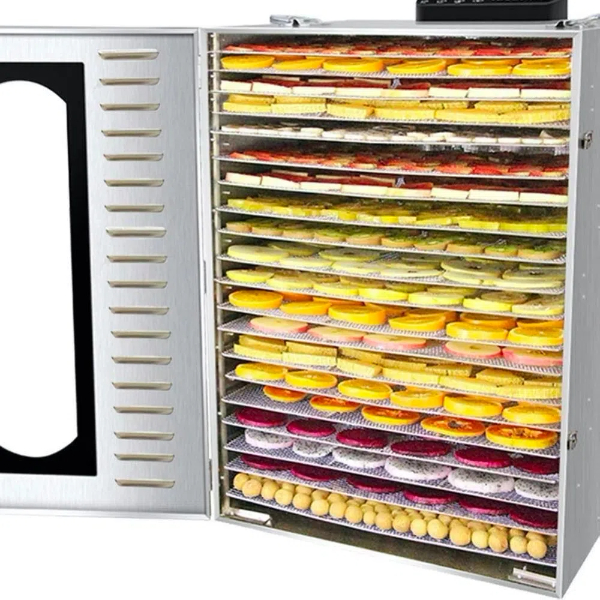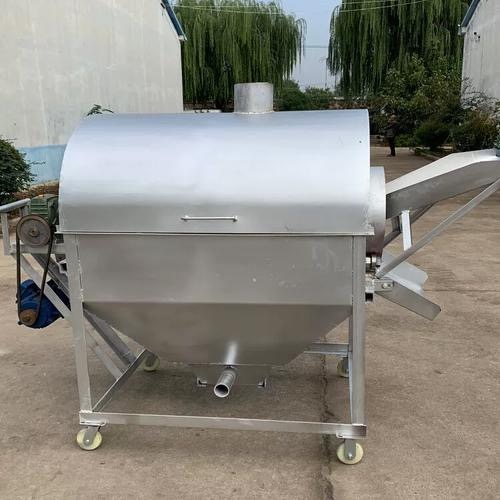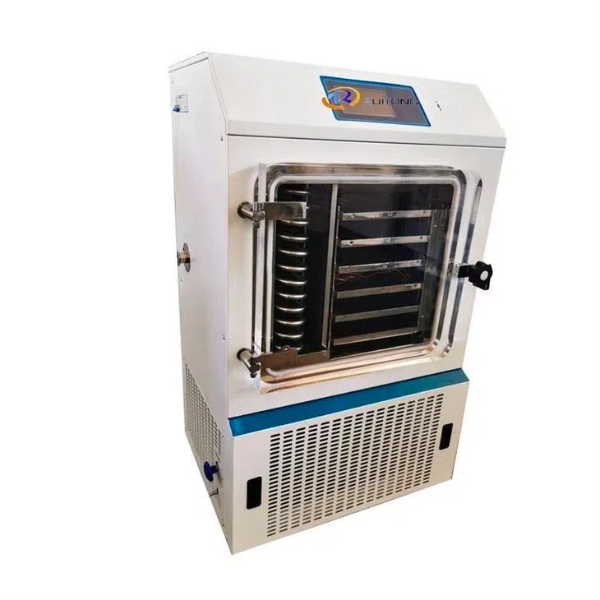
Content Menu
● Introduction to Dry Foods Machines
● Understanding the Technology Behind Dry Foods Machines
>> Food Dehydrators: The Versatile Workhorses
>> Freeze Dryers: The High-Tech Preservation Solution
● Benefits of Using Dry Foods Machines
>> Nutritional Preservation
>> Cost-Effective Food Preservation
>> Reduced Food Waste
>> Convenience and Portability
● Popular Applications of Dry Foods Machines
>> Fruit and Vegetable Dehydration
>> Jerky Making
>> Herb and Spice Preservation
>> Pet Treat Production
● Choosing the Right Dry Foods Machine
>> Capacity and Size
>> Temperature Control and Timer
>> Energy Efficiency
>> Noise Level
>> Ease of Cleaning
● Tips for Successful Food Dehydration
● The Future of Dry Foods Technology
● Conclusion
● Frequently Asked Questions
>> Q1: What's the difference between a food dehydrator and a freeze dryer?
>> Q2: How long do dehydrated foods last?
>> Q3: Can all foods be dehydrated?
>> Q4: Is it safe to make jerky in a home food dehydrator?
>> Q5: How energy-efficient are dry foods machines?
Introduction to Dry Foods Machines
In today's fast-paced world, where food preservation and healthy snacking have become increasingly important, dry foods machines have emerged as game-changers in the culinary landscape. These innovative devices, also known as food dehydrators or freeze dryers, have revolutionized the way we preserve and enjoy our favorite fruits, vegetables, and even meats. Whether you're a health-conscious individual looking for nutritious snacks or a homesteader aiming to preserve your harvest, dry foods machines offer a versatile solution for extending the shelf life of various food items while retaining their nutritional value.
Understanding the Technology Behind Dry Foods Machines
At its core, a dry foods machine works by removing moisture from food items, inhibiting the growth of bacteria, yeasts, and molds that cause spoilage. This process not only extends the shelf life of foods but also concentrates their flavors, making them more intense and enjoyable. There are several types of dry foods machines available in the market, each utilizing different technologies to achieve the desired results.

Food Dehydrators: The Versatile Workhorses
Food dehydrators are perhaps the most common type of dry foods machines found in home kitchens. These devices use a combination of low heat and air circulation to gradually remove moisture from food items. Most food dehydrators consist of stackable trays that allow for simultaneous drying of various foods. The process can take anywhere from a few hours to a day, depending on the food type and desired level of dryness.
Freeze Dryers: The High-Tech Preservation Solution
Freeze dryers represent the cutting edge of dry foods technology. Unlike traditional dehydrators, freeze dryers work by first freezing the food and then creating a vacuum environment. This process, known as sublimation, allows the frozen water in the food to transform directly from a solid to a gas, bypassing the liquid phase. The result is a product that retains its original shape, color, and nutritional content while being completely dry and shelf-stable for years.
Benefits of Using Dry Foods Machines
The popularity of dry foods machines has soared in recent years, and for good reason. These devices offer a multitude of benefits that appeal to a wide range of users, from health enthusiasts to busy families and outdoor adventurers.
Nutritional Preservation
One of the most significant advantages of using a dry foods machine is the preservation of nutrients. Unlike canning or high-heat drying methods, food dehydrators and freeze dryers operate at lower temperatures, which helps retain vitamins, minerals, and enzymes present in fresh foods. This makes dried foods an excellent source of concentrated nutrients, perfect for those looking to maintain a healthy diet.
Cost-Effective Food Preservation
Investing in a dry foods machine can lead to significant savings in the long run. By purchasing fruits and vegetables in bulk during peak season and dehydrating them, you can enjoy your favorite produce year-round at a fraction of the cost. Additionally, making your own dried snacks at home is often more economical than purchasing pre-packaged alternatives.
Reduced Food Waste
Food waste is a global concern, and dry foods machines offer an effective solution. By dehydrating fruits, vegetables, and herbs that might otherwise spoil, you can significantly reduce food waste in your household. This not only saves money but also contributes to a more sustainable lifestyle.
Convenience and Portability
Dried foods are lightweight, compact, and easy to store, making them ideal for various situations. Hikers and campers appreciate the convenience of carrying nutrient-dense, lightweight meals on their adventures. Similarly, busy professionals can enjoy healthy, homemade snacks on the go without worrying about refrigeration or spoilage.

Popular Applications of Dry Foods Machines
The versatility of dry foods machines has led to their adoption in various settings, from home kitchens to commercial food production facilities. Let's explore some of the most popular applications of these innovative devices.
Fruit and Vegetable Dehydration
Fruits and vegetables are among the most commonly dehydrated foods. From classic favorites like apple chips and banana slices to more exotic options like kiwi or dragon fruit, the possibilities are endless. Vegetable dehydration is equally popular, with items like kale chips, zucchini crisps, and dried tomatoes gaining traction among health-conscious consumers.
Jerky Making
For meat lovers, dry foods machines open up a world of possibilities in jerky making. Whether it's beef, turkey, or even fish jerky, these devices allow for precise control over the drying process, resulting in safe, flavorful, and protein-rich snacks. Many jerky enthusiasts appreciate the ability to experiment with different marinades and spice blends to create unique flavor profiles.
Herb and Spice Preservation
Gardeners and cooking enthusiasts often turn to dry foods machines to preserve herbs and spices. By dehydrating fresh herbs from the garden, you can enjoy their flavors throughout the year. This method is particularly useful for preserving delicate herbs like basil, cilantro, and parsley, which can lose their potency quickly when fresh.
Pet Treat Production
Health-conscious pet owners have discovered the benefits of using dry foods machines to create homemade pet treats. By dehydrating meats, fruits, and vegetables, pet owners can produce healthy, preservative-free snacks for their furry friends. This application has gained popularity among those seeking to avoid commercial pet treats with artificial additives.
Choosing the Right Dry Foods Machine
With the growing popularity of food dehydration, the market offers a wide range of dry foods machines to suit various needs and budgets. When selecting a device, consider the following factors:
Capacity and Size
Consider how much food you plan to dehydrate regularly. If you're an occasional user, a smaller, stackable dehydrator might suffice. For those planning to dehydrate large quantities or a variety of foods simultaneously, a larger capacity machine with multiple trays would be more suitable.
Temperature Control and Timer
Look for machines that offer precise temperature control and timer functions. Different foods require different drying temperatures and times, so having these features allows for greater versatility and better results.
Energy Efficiency
Since dry foods machines often run for extended periods, energy efficiency is an important consideration. Look for models with good insulation and energy-saving features to minimize electricity consumption.
Noise Level
Some dry foods machines can be noisy due to their fans and motors. If you plan to run the machine overnight or in shared living spaces, consider models designed for quiet operation.
Ease of Cleaning
Opt for machines with dishwasher-safe trays and easy-to-clean surfaces. This will make maintenance much more manageable, especially if you plan to use the device frequently.
Tips for Successful Food Dehydration
To get the most out of your dry foods machine, consider the following tips:
1. Prepare foods uniformly: Cut fruits and vegetables into even slices to ensure consistent drying.
2. Pre-treat fruits: Dip sliced fruits in lemon juice or ascorbic acid solution to prevent browning.
3. Rotate trays: For even drying, rotate the trays periodically during the dehydration process.
4. Store properly: Once dried, store foods in airtight containers in a cool, dark place to maximize shelf life.
5. Experiment with flavors: Try adding spices or marinades to create unique flavor combinations.
The Future of Dry Foods Technology
As technology continues to advance, we can expect to see further innovations in the field of food dehydration. Smart food dehydration technology is on the horizon, with features like app-controlled operations, AI-powered drying algorithms, and integration with smart home systems. These advancements promise to make the process of food dehydration even more efficient and user-friendly.
Conclusion
Dry foods machines have revolutionized the way we approach food preservation and healthy snacking. From compact home dehydrators to sophisticated freeze dryers, these devices offer a range of options for individuals and businesses alike. By harnessing the power of dehydration technology, we can reduce food waste, save money, and enjoy nutritious, flavorful foods year-round. As the technology continues to evolve, dry foods machines are poised to play an increasingly important role in our kitchens and our approach to sustainable, healthy living.

Frequently Asked Questions
Q1: What's the difference between a food dehydrator and a freeze dryer?
A1: Food dehydrators use low heat and air circulation to remove moisture from foods, while freeze dryers first freeze the food and then create a vacuum environment to sublimate the ice directly into vapor. Freeze dryers generally produce higher quality results with better nutrient retention but are more expensive and complex.
Q2: How long do dehydrated foods last?
A2: Properly dehydrated and stored foods can last anywhere from 6 months to several years, depending on the food type and storage conditions. Freeze-dried foods typically have a longer shelf life, often lasting up to 25 years when stored correctly.
Q3: Can all foods be dehydrated?
A3: While many foods can be dehydrated, some are better suited to the process than others. Fruits, vegetables, lean meats, and herbs are excellent candidates for dehydration. Foods with high fat content, such as avocados or fatty meats, don't dehydrate well and can become rancid quickly.
Q4: Is it safe to make jerky in a home food dehydrator?
A4: Yes, it's safe to make jerky in a home food dehydrator, but it's crucial to follow proper food safety guidelines. The USDA recommends heating meat to 165°F (74°C) before the dehydration process to kill any harmful bacteria. Always use lean cuts of meat and store the finished jerky in airtight containers.
Q5: How energy-efficient are dry foods machines?
A5: The energy efficiency of dry foods machines varies depending on the model and type. Generally, food dehydrators are more energy-efficient than conventional ovens for drying foods. Modern dehydrators often come with energy-saving features like timers and adjustable thermostats. Freeze dryers typically consume more energy due to their more complex process, but they're becoming more efficient with technological advancements.












